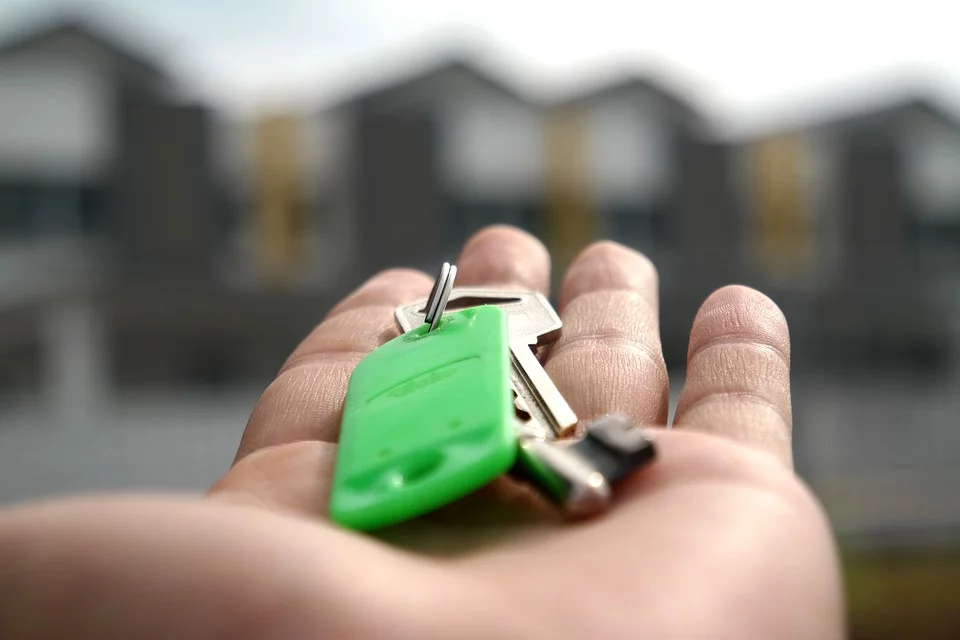Nationwide: UK house prices rise a further 0.7% in June
Annual house price growth rises to 13.4%, the highest level since November 2004, according to the latest Nationwide House Price Index.

Prices increased by 0.7% month-on-month, after taking account of seasonal factors.
According to the index, Scotland has seen the weakest growth in the second quarter of this year at 7.1%, closely followed by London at 7.3, with Northern Ireland the strongest witnessing 14% growth. Wales also experienced 13.4% growth.
Commenting on the figures, Robert Gardner, Nationwide’s chief economist, said: “Despite the increase in house prices to new all-time highs, the typical mortgage payment is not high by historic standards compared to take-home pay, largely because mortgage rates remain close to all-time lows – in fact, on this measure affordability remains broadly in line with its long-run average, as shown in the chart below.
“However, house prices are close to a record high relative to average incomes. This is important because it makes it even harder for prospective first-time buyers to raise a deposit. For example, a 10% deposit is over 50% of a typical first-time buyer’s income. A potential buyer earning the average wage and saving 15% of take-home pay would now take five years to raise a 10% deposit.
“The improving availability of mortgages for those with a small deposit (and the continued availability of the government’s Help to Buy equity loan scheme) is helping some people over the deposit hurdle, but it is still very challenging for most.”
On the outlook, Mr Gardner said: “Underlying demand is likely to remain solid in the near term as the economy unlocks. Consumer confidence has rebounded while borrowing costs remain low. This, combined with a lack of supply on the market, suggests further upward pressure on prices. But as we look toward the end of the year, the outlook is harder to foresee.
“Activity will almost inevitably soften for a period after the stamp duty holiday expires at the end of September, given the strong incentive for people to bring forward their purchases to avoid the additional tax. Nevertheless, underlying demand is likely to soften around the turn of the year if unemployment rises as most analysts expect, as government support schemes wind down. But even this is far from assured. Even if the labour market does weaken, there is also scope for shifts in housing preferences as a result of the pandemic to continue to support activity for some time yet.”
On Scotland’s house price growth, Mr Gardner continued: “Conditions were more muted in Scotland, which saw a modest increase in annual growth to 7.1% (from 6.9% last quarter) and was also the weakest performing part of the UK. This may reflect that the stamp duty (LBTT) holiday in Scotland ended on 31 March.”
He added that England saw annual house price growth increase to 9.9%, from 6.4% in the first quarter of the year. Within England, Yorkshire & Humberside was the strongest performing region, with prices up 13.0% year-on-year. This is the strongest price growth seen in the region since 2005 and pushed average prices to a record high of £183,982.
Mr Gardner said: “Both the East and West Midlands saw annual price growth rise to 12.2% in Q2. Meanwhile in the North, prices were up 11.2% year-on-year.
“London was the weakest performing English region, though still saw a pickup in annual price growth to 7.3%, from 4.8% last quarter. The surrounding Outer Metropolitan region, which includes places such as Luton, Watford, Sevenoaks and Woking, saw annual price growth rise to 8.2%.”
Martin Beck, senior economic advisor to the economic forecaster the EY ITEM Club, commented: “Property prices continue to benefit from a cocktail of forces propelling demand. The extension of the stamp duty holiday looks to have prompted interest among potential buyers before the tax holiday begins to be phased out on 30 June.
“That older and higher income – and generally home-owning – households have emerged from the pandemic in a relatively good economic state continues to insulate the property market from the impact of COVID-19 too. For example, between February 2020 and May 2021, the number of people aged 35 and older in employment fell by only 19,000 or 0.1%; among those aged 18-34, who are much more likely to rent than own their own homes, employment fell by 410,000 or 4%.
“Low mortgage rates continue to support affordability in the face of ever-higher prices – the latest data showed interest payments falling to 3.5% of average household incomes, the lowest since records began in 1987. The substantial savings accumulated by some households during lockdowns is funding larger deposits on properties. Expectations of rapid price rises could also mean the housing market may attract more people buying for speculative reasons rather than the need for a home.
“Most of these factors will persist for some time, suggesting that the partial end of the stamp duty holiday may not exert too much of a drag on housing demand and house prices. And the mortgage guarantee scheme which came into effect in April may partially compensate as a means of supporting values. In addition to encouraging transactions, the scheme means the Government effectively taking a stake in the housing market, which could fuel expectations that policymakers won’t allow prices to fall.”
He added: “There are some headwinds beyond the end of the stamp duty holiday. The end of the evictions ban on 31 May could prompt some landlords to sell to make up for rent arrears they have not been able to address until now, raising the supply of properties and weighing on prices. A similar outcome might arise if suggestions of a permanent decline in the number of foreign-born workers in the UK during the pandemic prove true. And, despite a rapidly recovering economy, higher inflation and the prospect of an increase in unemployment when the furlough scheme ends means the outlook for household income growth is not all positive.
“But for the time being, the housing market is likely to continue to be on the upside.”








